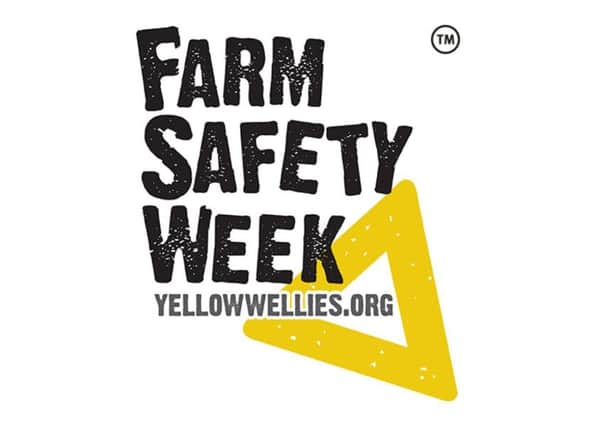Always use best practice on the farm


HSENI’s ‘SAFE’ campaign highlights the four main causes of fatalities on local farms: Slurry, Animals, Falls, and Equipment. The following are the respective checklists for each category.
The slurry mixing code –
Always
· Keep children away from the area at all times when working with slurry
· If possible, mix on a windy day
· Open all doors and windows
Advertisement
Advertisement
· Take all animals out of the building before starting to mix slurry
· Use outside mixing points first
· If slats are removed, cover exposed areas of the tank beside the pump/mixer to stop anything falling in
· Start the pump/mixer – then get out and stay out of the building for as long as possible – at least 30 minutes
· Any time you have to go into the building try to make sure that another adult knows what you are doing and can get help if necessary
Advertisement
Advertisement
· If you have to re-enter to move the pump or change the direction of the pump, leave the building as soon as this is done – do not go back in for as long as possible – at least another 30 minutes.
Never
· Rely on filter type facemasks
· Use gas monitors as a substitute for working safely
· Have naked flames near slurry, as slurry gas mixture is flammable
· Stand close to the exhaust of a vacuum tanker when it is being filled
Remember
There is no safe slurry tank. The gases can kill people and animals almost instantly. Prevent accidents and save lives by always following the safe system of work.
Working with animals –
Always
Advertisement
Advertisement
q watch for warning signs of animal aggression, especially in bulls and cows/heifers around calving time
q work out an escape route or refuge in advance of handling livestock
q be careful around cows and heifers with new-born calves
q remember, that cows that are on heat are unpredictable
q where possible use a head gate to restrain a cow/heifer when checking the calf
q try to have help available when calving a cow or heifer
q remind farmers that aggressive and difficult cattle should be culled as soon as possible
Advertisement
Advertisement
q protect yourself against disease with proper personal hygiene
Never
q turn your back on a bull or trust a bull
q put yourself or a colleague at risk with cattle
q stress or arouse cattle unnecessarily
q turn your back on a cow following calving
q beat or shout at cattle unnecessarily – they remember bad experiences
Remember
Never underestimate the risk from cattle, even with good precautions in place. It could save your life.
Falls from heights –
Always
· when using a ladder, make sure it is in good condition and long enough for the job
· watch out for overhead power lines
· ensure the ladder is tied or footed to prevent slipping
Advertisement
Advertisement
· keep three points of contact with the ladder and avoid stretching where your belt buckle goes outside the stiles of the ladder
· think about the job you are going to do in advance and plan the work safely
· consider whether repairs or other work at height can be carried out safely from below
· choose collective measures that will keep everyone working at or near the site safe like a working platform
Advertisement
Advertisement
· ensure any equipment used for work at height is adequately maintained and inspected regularly
· consider engaging the services of a reputable roofing contractor
Never
· set up a ladder on ground with cross slopes or down slopes - level the supporting surface with strong packing
· try to use a single plank to span the purlins or the joist - always use crawling boards or lightweight staging
Remember
Advertisement
Advertisement
Falls often occur because no precautions are taken, or the equipment employed is defective, not appropriate, or used incorrectly. Often people about to do a job believe it will ‘only take a few minutes’. They take the risk in the hope that simply being careful will be enough.
Equipment safety checklist -
Always
· keep all guards in place on tractors and equipment
· ensure PTO shafts are fully guarded (O-guard, U-guard and shaft) and the safety chain is attached
· make sure that all mirrors and cameras (if fitted) are clean and fully functional on tractors and telescopic handlers
· keep all windows clean and make sure you check all round before carrying out any manoeuvre
Advertisement
Advertisement
· ensure you have good all-round visibility on tractors and telehandlers
· when pulling heavy machinery equipped with hydraulic brakes, make sure the brakes are connected to the tractor and work properly
· keep the brakes on all your machines properly maintained, especially the parking brakes
· operate tractors with enclosed safety cabs or roll bars
· take care when mounting or dismounting tractors or telehandlers
Advertisement
Advertisement
· only start your tractor from the driver’s seat and make sure that your tractor’s starter system works properly
· check all hitches and linkages to ensure they are not worn or damaged
· make sure equipment is stopped fully before clearing blockages, which need to be cleared by hand
Never
· attempt to repair machinery if you do not have the correct tools and equipment and are not competent to do so
· run a tractor down a slope to start it
Advertisement
Advertisement
· check hydraulic pipes for leaks by running your finger along them while they are connected and under pressure
· work underneath a raised load or implement unless it is adequately propped
· work near overhead power lines when tipping trailers or using high-reaching machinery
Remember
Farmers and farm workers use tractors and other equipment every day. These machines are powerful, and if not operated safely, can lead to disabling injuries or death.